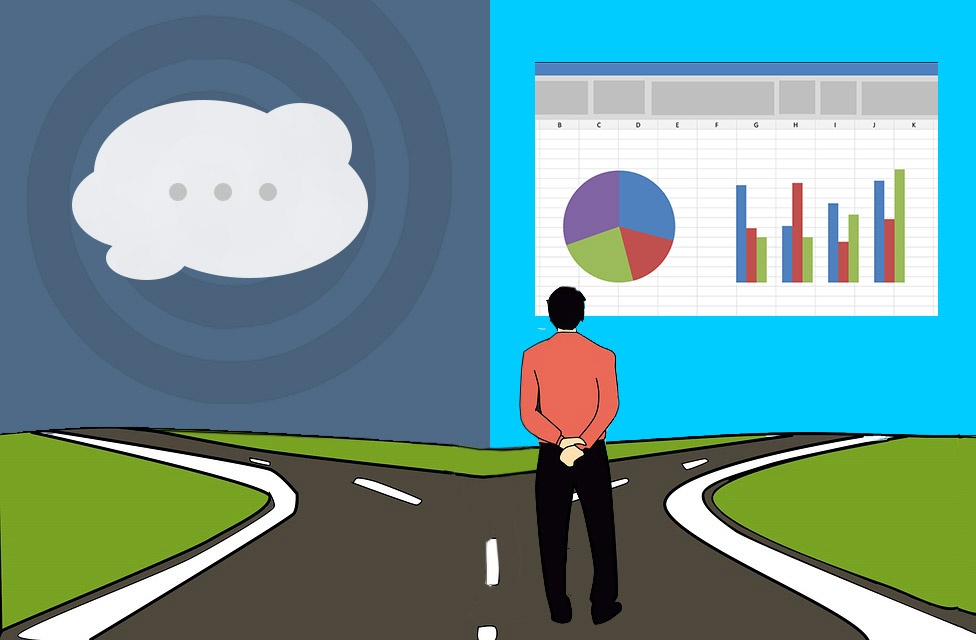A crisis can impact a brand at any time. From a customer complaint that gets blown up on social media, to a global pandemic like we’re experiencing right now, you never know when an issue can hit.
Yet there’s no need to panic. In fact, panic is your worst possible response. In a time of crisis, you need a level head. But more so, data. And the capabilities to make decisions driven by it. Here’s why.
Fight or flight or think
Due to the inground fight or flight response, people often turn to gut reactions when it comes to a crisis. These tend to avert rational thought and veer towards immediate action. Reacting before taking the time to consider your actions – which can actually inflame a crisis rather than damping it down.
Alternatively, following the 5 steps for data-driven decision making requires a more considered response, enabling you to understand all aspects of a crisis before you react. Improving your response time, making your crisis communications more relevant for your audience, and hopefully, mitigating the potential damage to your brand.
Data before a crisis
You can’t predict every crisis. But you can at least prepare. An efficient data monitoring strategy can
- Track the standard issues within your industry
- See how they’re being linked to your brand
- Identify new issues as they peak
The trick here is to move fast. If a customer complaint story is missed, within days it could be viral across social media, even making it into the press.
Identified and handled quickly, and it could come to nothing. In fact, answering a complaint satisfactorily can increase customer advocacy by up to 25%. In the eyes of the consumer, a complaint isn’t what matters – it’s how a brand responds (or doesn’t) that bears the most weight.
Of course, you can’t predict every crisis. But by brainstorming potential issues that could arise, and ensuring you have a continual data-driven picture of your brand and consumers, you can have the information to hand to allow you to respond instantly, without having to second guess your decisions.
Data during a crisis
Without data, how do you measure the reaction to your response?
You can’t. You’re just left hoping the crisis will blow over, or end up in a cycle of reactive responding.
With data, you can see how your response is perceived, in near real-time. Social analytics can help you monitor conversations consumers are having on social media. Watch how those conversations change after each response, to see if it is having an impact, and if people are uptaking the new key messages you’re diffusing.
You can split the information by demographics too. To see if a crisis is impacting regions differently, or if certain markets are engaging with it in different ways. So you can adapt your message to fit the target better. Data gives you the ability to shape a response that will resonate with your audience. You could trust your gut to respond, but messaging without content relevancy has an 83% lower response rate. Best to use data to make sure what you do works.
You can also look to competitor analysis to shape your crisis response. Look at how your competition is handling the crisis (or handled a similar crisis in the past), and see what elements you could replicate.
- Did they target a different audience?
- Did their messaging have a different tone or theme?
- Did their response fail, and if so, what can you do differently?
Data after a crisis
How exactly did the crisis affect your brand?
You could wait until the sales figures come in. Or you could look at the data you have to hand right now, to see exactly how you stand.
Sentiment analysis helps you understand how your business is perceived by consumers. And can be measured instantly. If your net sentiment is going down, there’s still an issue that needs tackling – which you can do before sales are hit.

- This sentiment graph shows how this brand’s image was hit hard by the crisis in late March. Their following communication efforts spun their issue into a positive with their highest sentiment from the last 3 months.
Share of voice is a valuable metric here too. During a global conflict, your sentiment may drop. But all brands could be impacted just the same. Share of voice compares your brand and your competitors’, to see who has the better market share. And since share of voice correlates with share of market, you can predict how future sales would be impacted. Data is still vital even after a crisis has hit.
Decisions = data
Now, when the situation is changing daily, you need to put your trust into data. It’ll help you work faster, better and more intuitively. It’s tempting to turn to your gut, but don’t risk it. Tackle the crisis with data, and you know you’re making the best possible decisions.

